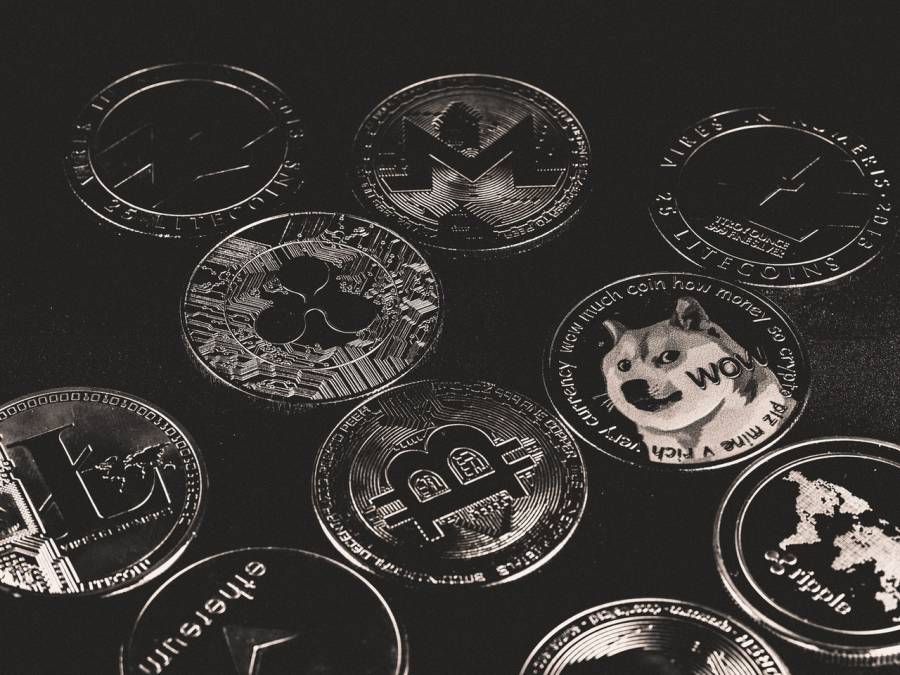Over the last few years, cryptocurrencies have entered the mainstream. People are now showing interest in subjects within the crypto ecosystem, like stablecoins, altcoins (altcoins is merely any coin other than bitcoin) — yielding, farming, and so on.
Tether, represented as $USTD, is one such subject that has raised a lot of questions.
To oversimplify it, we can define stablecoins as those cryptocurrencies that have roughly the same value as that of an underlying asset – US dollars in the case of Tether.
However, Tether is much more than just that definition.
Today we will go through everything you need to know about Tether, including its past and possible future. We will also discuss whether investing in Tether is a smart move.
What is USDT and when to invest in it?
We will begin with a general introduction of Tether for the unversed and proceed to more complex questions.
What is Tether ($USDT)?
The simplest definition of Tether is that it is a blockchain-based cryptocurrency pegged against the US dollar. However, that definition does not say much about the functioning of Tether or its importance. For the sake of simplification, we can compare Tether to a dollar bill in digital form. The exception is that $USDT is not issued by the government.
When you buy one USDT, you get a cryptocurrency valued at exactly the price of one US dollar. One Tether has the same value as one dollar. To ensure that this equilibrium is maintained, Tether claims to have physical collateral in financial institutions that back the price of Tether. That means there is $1 for every USDT minted and sold.
Tether was developed by BitFinex, a leading crypto exchange. It is also the native token of the Tether network. Tether rose to prominence soon after its launch. By 2021, Tether held the position of 5th largest cryptocurrency in the world. The market capitalization of Tether was at $68 billion at the same time.
Now that we have an overview of what Tether is all about, we can dive into the nitty-gritty.
What are stablecoins?
If we are to understand stablecoins with a Venn diagram, cryptocurrencies would be the big circle and stablecoins a small circle inside it.
All stablecoins are cryptocurrencies, but all cryptocurrencies are not stablecoins.
As we mentioned earlier, stablecoins have their value pegged to some other asset. Theoretically, the underlying asset can be anything that can act as a value reserve – gold, property, currency, and so on. In practice, we only have crypto, gold, and fiat-backed stablecoins. Tether is what we know as fiat-backed stablecoin. In other words, the value of fiat-backed stablecoins is pegged against the value of national currencies, like dollars, yen, euros.
Stablecoins, however, are not immune from risks. Though considerably lower, there is still risk involved in investing in stablecoins like USDT. Investors should be clear about their purpose before investing in stablecoins.
Apart from the prospect of getting dramatically high (or low) returns, stablecoins are not much different from other cryptocurrencies. They still have all the safety and scalability features of cryptocurrencies and the government does not have direct control over stablecoins. For these reasons, stablecoins have become very popular in a short time.
History of Tether
If we are to go back to the origins of Tether, we have to trace back to 2012 when J.R. Willett published his whitepaper on the prospects of a new cryptocurrency on the Bitcoin protocol. Willet was also behind one of the older cryptocurrency protocols called Mastercoin. It was on top of the Mastercoin protocol that Tether built its foundation.
One of the co-founders of Mastercoin, Brock Pierce, went on to co-found Tether. He was joined by ex CTO of Mastercoin Craig Sellars.
In July 2014, Pierce announced the launch of Realcoin. By November 2021, Realcoin was renamed Tether. The company was incorporated in Hong Kong and is owned by Tether Holdings Limited.
In 2015, it was revealed that Tether and cryptocurrency exchange BitFinex had the same owners. BitFinex later responded by saying that Jan Ludovicus van der Velde is the CEO of both entities.
In the early days of Tether, Taiwanese banks played a huge role in the international transfer of funds. However, Tether’s partner bank Wells Fargo soon landed in legal trouble, and lawsuits were filed.
As of now, there are five Tether tokens covering US dollars, euros, and yen. The TRC-20 token is the latest token from Tether, launched in 2020.
When to invest in Tether?
Timing the crypto market is very hard, if not impossible. There are many tips, tricks, and signals available on the internet, but they are useless more often than not.
You can invest in Tether whenever you want to. With Tether, there is no risk of massive price fluctuation, so you need not monitor the market constantly. However, the biggest benefit of investing in Tether is to invest in other cryptocurrencies in turn.
When we convert fiat currency to cryptocurrency, a certain percentage of the value is lost to processing and gas fees. However, when you buy other cryptocurrencies with Tether, there is much less loss of value. As a result, many choose to park their savings in Tether and invest in other cryptos when the time is right.
The use cases of Tether are not restricted to only buying other cryptocurrencies. There are many places where you can use Tether. Many websites and platforms allow payment in Tether since its value is relatively less volatile. Alternatively, people also invest in Tether to earn cash from interest rates.
If you are asking when to invest in Tether, you will not get any satisfactory answer. Instead, you should think about your reasons behind investing in Tether or any other stablecoin.
Where to buy Tether from?

You should buy Tether like you buy any other cryptocurrency. Being a stablecoin does not give Tether any special buying status or requirement.
People who rely on crypto exchanges can buy Tether from there. All major crypto exchanges in the world have Tether for sale and purchase. You can conveniently buy USDT with a credit card as and when you want. Alternatively, you can buy Tether directly from someone else holding it. You should only engage in peer-to-peer transactions with people you know and trust.
Just like any other cryptocurrency, you can store tether in both cold and hot wallets, or leave it with the exchange. Given the frequency of crypto exchange hacks, it is a safer choice to have it on a wallet instead.
Remember that the price of Tether is always pegged to the US dollar. If you see sources claiming the sale of Tether at a remarkably low price, it is most likely to be a scam. Only buy from authorized sources that have a clean track record.
Who should invest in Tether?
If you are looking to make quick bucks in the crypto market, Tether is not for you. Barring exceptions, Tether’s value never fluctuates rapidly. In all likelihood, you will not make a lot of profit from buying Tether.
How is it still the 5th largest crypto in the world? The answer lies in its stability.
As all crypto investors know, the market is both unpredictable and sentiment-driven.
Stablecoins help in bringing much-needed stability to the investor’s portfolio. It can also act as a reserve for value if you would like to withdraw profits from one cryptocurrency to invest in another. Doing the process by converting profits into fiat and vice versa is very time and resource-intensive. Tether plays a huge role in addressing this gap.
To get profits from Tether, you need to deposit them with certain crypto exchanges. Some crypto exchanges give 10% to 12% annually compounded interest on stored Tether. It is an effortless and simple way to make money without doing anything other than holding your USDT tokens.
Tether also plays a very important role in international money transfer. Given its stability, it is one of the most reliable ways to transfer funds across borders. For example, the value of Bitcoin can increase rapidly within 24 hours.
If you are making an international transfer through Bitcoin to save processing fees, you might end up losing money due to fluctuating prices. With Tether, we do not have to deal with this problem of rapidly changing value.
If you send some $100 worth of Tether, it is very unlikely to become $50 or $150 over the next few days, weeks, or months.
The importance of stablecoins in the crypto market
Stablecoins play a very important role in maintaining equilibrium in the crypto market. In the long-term vision of cryptocurrency, stablecoins like USDT will be as important as Bitcoin.
The biggest problem with Bitcoin in its present stage is the volatility. Bitcoin often falls or rises by as much as 10% in a 24-hour window.
In a month, the value can fluctuate by as much as 50%. In theory, there is no limit to how much Bitcoin can fluctuate in any given duration.
Bitcoin acts as a marker of the market. Prices of other cryptocurrencies, especially those known as memecoins, can fluctuate even more.
Whenever there is a movement in the price of Bitcoin, other cryptos show a similar movement. For these reasons, Bitcoin in its present form cannot act as a medium of exchange. There are far too many problems to take care of, and it is unlikely for people to buy and sell regular items with Bitcoin.
Stablecoins help in solving this pertinent problem. If cryptocurrencies evolve to become universal payment currencies, stablecoins will lead the way. Since their value does not go up or down rapidly, stablecoins can become a viable medium of transaction in the future.
Apart from these advantages, stablecoins also help in drawing more investors to the market. Many people are more than happy with a 10%-12% return every year. Given the significantly lower risks, it is a great option for beginner crypto investors.
Stablecoins are not without problems. There are many speculations and controversies surrounding stablecoins, including USDT. However, they play a very important role in making the crypto ecosystem more comprehensive and inclusive. The benefits of a thriving stablecoin market will be more apparent in the coming years as the market matures.
Controversies surrounding Tether
Tether’s history is fraught with controversies. Ever since Tether was enlisted in BitFinex, there have been several controversies and legal inquiries.
When Tether was enlisted in BitFinex, it got widespread attention from investors. However, BitFinex authorities did not reveal that the owners of Tether Holdings and BitFinex are the same. It was only during the Paradise Papers leaks that the secret was revealed. This event raised suspicion about Tether’s credibility in the minds of investors.
Tether claims that all its issued tokens are backed by dollars in financial institutions. In March 2021, reports revealed a shocking fact — only 2.9% of Tether was actually backed by cash. It was a big blow to the credibility of Tether and led to many people withdrawing their deposits.
There have also been reports of financial mismanagement between Tether Holdings and BitFinex. BitFinex allegedly took money from Tether’s reserves to cover its own losses. It was a shocking revelation that further put a blotch on Tether’s reputation and New York Attorney General Letitia James was actively engaged in the case. Tether also lost $31 million in a cyberattack in 2017.
Other stablecoins
Tether was the first stablecoin and continues to be the most popular. However, there are new entrants to the market, and some of them are performing very well. TrueUSD is one such stablecoin that is also pegged to the US dollar.
Other promising stablecoins are DAIUSD, USD Coin, Binance USD, and Terra USD.
Conclusion
Like all cryptocurrencies, Tether has its pros and cons. Being a stablecoin makes Tether quite different from Bitcoin, Ethereum, and other popular cryptocurrencies.
Despite controversies and speculations, Tether has stayed true to its purpose for many years. Whether you want to invest in it or not is a decision that only you should take after carefully considering all the factors.
Image Credit: Rūdolfs Klintsons; Pexels; Thank you










